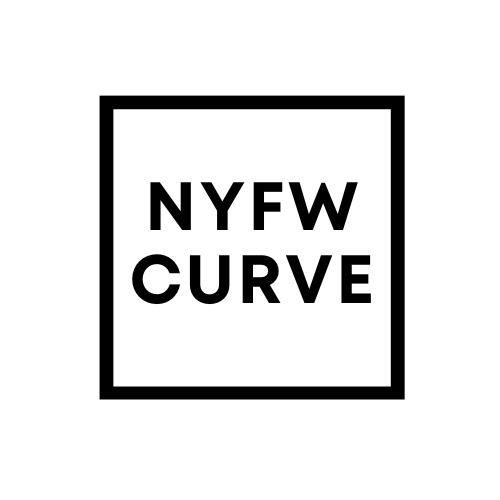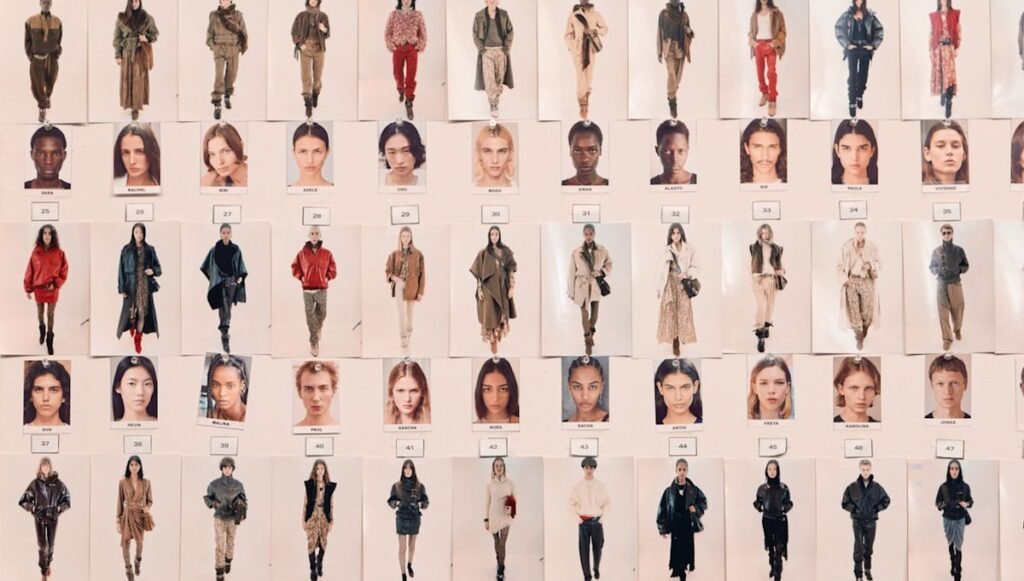More than seven years ago in February 2017, Ashley Graham made history in a furry cropped jacket and sweater dress. She will be the first curvy model to walk the Michael Kors show at New York Fashion Week.
“[I’m used to being] The only curvy girl — I’m excited that every designer and every magazine is going in the right direction,” Graham told Fashion then. To her, the fall 2017 season feels like a turning point in a long-running battle to make fashion more inclusive on every level. In addition to the first Kors show, plus-size models have booked covers and runway shows. The brand is expanding its size range. “This is more than just a designer. This is more than just a model,” Graham said. “This is the trend of the future.” It seems that the one-size-fits-all mentality is finally starting to change. Seven years later, the situation turned around.
Earlier this week, fashion business Released its semi-annual size inclusivity study, which measures body types represented on models in spring 2025 fashion shows in New York, London, Milan and Paris. The industry publication found that of the 8,763 looks showcased at 208 fashion shows and presentations, only 0.8% were plus-size. (Plus sizes are equivalent to U.S. size 14 and up.) Castings of plus-size models also fell by less than 1 percent last season. Casting of medium-sized models (i.e., US sizes 6-12) has increased (if you can really call it that) from season to season, with the “improvement” increasing from 3.7% to 4.3%. The remaining 94.9% are rulers.
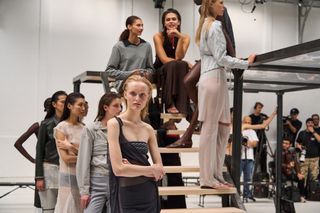
Models rehearse for a show during Paris Fashion Week.
(Image source: Launchmetrics Spotlight)
Unfortunately, the dozen or so fashion editors, publicists, stylists and buyers I interviewed after the study was released weren’t necessarily shocked by the numbers. Attendees enter the season hoping to see themselves, or at least a hybrid of their bodies, wearing the best hot pants and nude skirts on the catwalk. But they all retreated back to the group chat, and eventually my private messages, and came to the same conclusion: The rise of quick-loss drugs (like Ozempic, which was originally developed to treat diabetes) and TikTok’s thirst for “how to lose weight” content outweighed caught the limelight.
“Given the proliferation of GLP-1, I do expect body diversity to decrease,” says love list Writer Jessica Graves. “There are only a handful of designers like Grace Ling and Christian Siriano who, in my opinion, are really committed to creating diverse models.”
I noticed the regression myself as I shuffled from show to show at New York Fashion Week Spring 2025: the models were all US sizes 0 or 2, with hips sticking out of crochet dresses , I can count the ribs from the seat in front. By the weekend, and then on to London, Milan and Paris, the presence of curvy models like Jill Kortleve or Alva Claire felt like a shadow of Graham’s 2017 musings: they were often the only ones in the room.
“It would be easy to blame all the painfully thin models on the runways last season on semaglutide drugs like Ozempic or Wegovy (so many!), but I think [these drugs] It just makes it easier for us to become addicted to the relentless pursuit of thinness,” Marie Claire Magazine beauty director Hannah Baxter told me. They have once again created a culture that allows for thinness at all costs, and fashion rewards it.
Seeing the same frail bodies over and over again affected Baxter’s close industry friends and herself: “All I had to do was look at a recent Paris fashion show and I felt like I was 14 years old again, in 2003. Worried that my thighs are getting longer too.
As designers reduce size in their castings, they’re not only reshaping our understanding of who belongs on the runway. They’ve also shrunk the number of women producing clothes outside of fashion week.
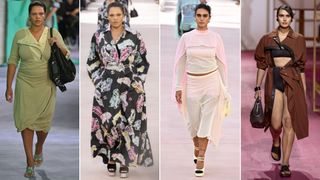
Alva Claire (left, Burberry, center left, Chanel) and Jill Kortleve (center, right, Chanel, right, Hermes) are often the only curvy women on the runway. Chanel’s Spring 2025 show was a rare exception.
(Image source: Getty Images)
Take the red carpet, for example. VIP stylist Ariel Tunnell designs clothing for sizes 2 to 24. . That means her clients don’t have as many options. “This season in particular is very disappointing. There are very few shows for medium and large clients,” she said. “Apart from [Christian] Siriano, few designers cater to the real female body. Unfortunately, it does limit ready-to-wear and customization options.
I hear the same thing from regional apparel buyers and personal stylists: they are increasingly narrowing their view of the runway and sharing fewer options with their customers and customers.
While some brands believe size inclusivity is too costly for their business to sustain, that doesn’t appear to be the case at Copenhagen Fashion Week, with even the newest brands on the official calendar consistently casting models of all body types . Of course, the market has a set of minimum standards that require participating brands to be inclusive.
It’s heartbreaking to realize that body inclusivity now seems to be viewed as just another trend, and it’s disappearing as quickly as it appeared.
Ruthie Friedlander, co-founder of The Chain, points out that falling back on thin-based casting directives can also have harmful health consequences. To put things into perspective, the number of eating disorders in the United States has been on the rise since 2020, according to NEDA (National Eating Disorders Association). When fashion images promote a single, largely unattainable body type as the gold standard, women on and off the runway feel they need to conform, to the detriment of their health. “The fashion industry has a significant impact on these pressures, and the shift away from size representation is not only disappointing, but dangerous and life-threatening,” Friedlander said.
“Watching the shows this season,” she added, “it’s heartbreaking that body inclusivity now seems to be viewed as just another trend — one that’s disappearing as quickly as it appeared.”
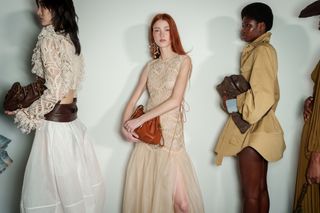
Models backstage during Paris Fashion Week.
(Image source: Launchmetrics Spotlight)
Most publicists, editors and regular clothes hangers I spoke to for this story agreed that they’d like to see more diverse bodies back on the runways (and, frankly, everywhere). Outside of my own forward-thinking fashionista bubble, I’ve seen some insiders online defend skinny-girl-only casting, saying not every brand is for everyone. But really, who wears or doesn’t wear a certain brand should be determined solely by aesthetic taste, not clothing or pants size.
